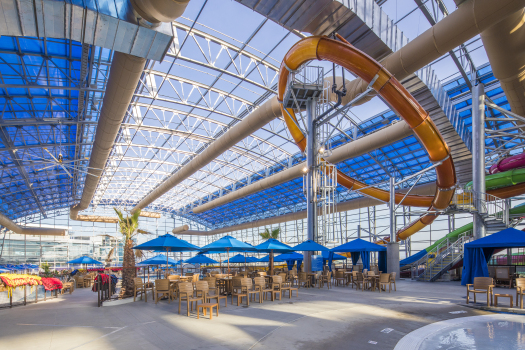Experts at Americas Lodging Investment Summit (ALIS) weighed in on the 2019 hotel landscape. Hotel News Now reports that executives from STR, CBRE Hotels, Kalibri Labs and JLL shared their forecasts at ALIS and talked about rate, supply and other trends hoteliers should keep an eye on.
Published by: Stephanie Ricca/Hotel News Now
Published date: January 2019
Numbers lend credibility to conversations about where the hotel industry is in a cycle and whether the future looks like a peak or a valley.
At the Americas Lodging Investment Summit, executives from several data analysis companies put 2018 performance and activity into context, shared how the next few years are shaping up, and what hoteliers should be aware of when it comes to the data.
Vail Ross, SVP of global business development and marketing at STR, said 2018 “was a good year, not a great year.” (STR is the parent company of Hotel News Now.)
“We’ve had better years, but we’re still seeing some positive growth,” she said.
Compared with 2017, U.S. hotels ended 2018 with a 0.5% increase in occupancy to 66.2% and 2.4% growth in average daily rate to $129.83, leading to revenue per available room of $85.96, up 2.9%.
For 2019, STR and Tourism Economics downgraded their forecast slightly, projecting that flat occupancy and 2.3% ADR growth will lead to 2.3% RevPAR growth in 2019.
CBRE Hotels Senior Managing Director Mark Woodworth put 2019 hotel performance in “the blip category,” saying the industry won’t see a dip but more of a softer blip.
He pointed to strong consumer and government spending, which continue to drive GDP growth, as a solid underpinning of travel and hotel performance.
“Overall, the picture remains very healthy,” he said. “There’s still some decent growth in some of these markets.”
Kalibri Labs, which tracks guest-paid revenue, net revenue and revenue capture, sees “healthy growth” in the guest-paid revenue category in 2019, CEO and founder Cindy Estis Green said.
“Guests are paying, we expect, 4.4% more in the next year compared to 2018, and this is good and encouraging news,” she said.
However, net revenue growth is expected to slow in 2019, as hotels retain less of what guests pay. “We’re not able to flow-through more of that revenue,” she said.
Kalibri Labs forecasts RevPAR growth of approximately 1.9% in 2019, driven by ADR growth and flat occupancy, but Estis Green said she worries about headwinds from channel-related distribution costs.
Supply and demand
A lot of attention is on supply and demand going into 2019, as hoteliers search for any indicators of possible cycle shifts.
STR forecasts both supply and demand growth of 1.9% in 2019.
“We had a period from 2010 into 2018 where room demand outpaced supply, and we’ve never had it that long,” Ross said. “That’s an interesting thing we won’t see in 2019 and 2020.”
Woodworth forecast “a slowdown of demand” in the next few years, but he was quick to point out it’s “not a downturn.”
“We think it’ll pick right back up after that,” he added.
Ross and Woodworth said those metrics’ correlation with GDP and other economic indicators give them confidence that hotel demand will continue to keep the industry in a good spot. Still, Woodworth pointed out that elevated uncertainty due to the U.S. political environment can have a dampening impact on overall hotel demand and rate.
But while supply and demand might even out in the coming years, Mark Wynne Smith, JLL’s global CEO of hotels and hospitality, emphasized that supply numbers still are low.
“If you look at what tends to bring cycles to a nasty end, it’s supply,” he said. “Now the level of supply going in is much lower than in the previous two cycles.”
The ADR factor
“If there’s one wild card to the forecast that could have an impact on RevPAR, it’s ADR,” Ross said.
Estis Green talked about the continuing “tremendous downward pressure on rates” in the industry, driven in part by online rate transparency, and encouraged hoteliers to educate themselves on finding the most profitable business mix to yield stronger end results.
“Understanding the nature of the business in your market has a huge influence on shifting your mix,” she said.
Ross agreed, adding that the continued strengthening of group demand is another factor that allows hoteliers to optimize their most profitable business mix.
Transaction trends
Wynne Smith shared some insight into hotel transaction trends for 2019 and beyond.
“There is a huge amount of capital out there to drive private equity,” he said. “We still think they’ll be the biggest purchaser segment through 2019, and they’re also going to sell. But many of them have launched longer-term funds now.”
As far as real estate investment trusts, Wynne Smith acknowledged recent stock price volatility but said that wouldn’t sideline the public companies entirely.
“Many of them do have access to capital and we expect them to keep buying, but a lot will be accretion to what they already own,” he said. “We don’t think there will be a buying spree—just selective and disciplined (buying).”


